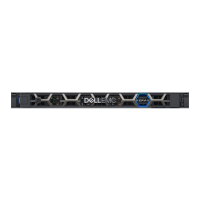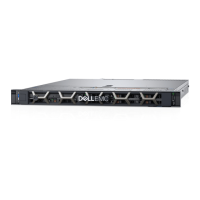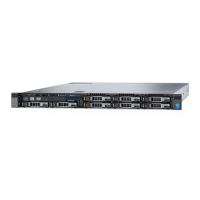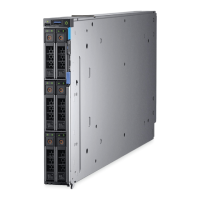39 | Dell EMC VxRail Appliance Operations Guide
© 2017 Dell Inc. or its subsidiaries.
Configuring IOPS limit for objects (QoS)
By default, vSAN allows virtual machines to perform IO operations at the rate requested by the
application. The number of IOs is only limited by the system configuration. All workloads get the
same IO access, without regard to the importance of the workload.
As a result, the performance of more important workloads can be adversely impacted because
of the amount of resources consumed by the less important workloads. This impact is
sometimes referred to as noisy neighbors. An example is an analysis and reporting application
that drives a heavy IO workload twice a day and, when it does, impacts an OLTP application.
While the analysis and reporting application may be important to the business, it is not as time-
sensitive as the customer-facing OLTP application. Limiting the IOPS available to the analysis
and reporting application would eliminate its adverse impact on the OLTP application.
The vSAN SPBM IOPS limit for objects rule limits the impact of noisy neighbors on more
important workloads. This rule establishes Quality of Service (QoS) for an object by defining an
upper limit on the number IOPS a VM/VMDK can perform. When an object exceeds the IOP
limit, IO operations to that object are throttled.
The algorithms used by vSAN intelligently handle bursts of activity and allow an object to double
its IOP-limit rate for the first second after a period of inactivity.
By default, the IOPS limit for an object is set to zero and IOPS limits are not enforced.
Configuring IOPS limit for a VM
To configure IOPS limits for an object:
First, create a new SPBM policy with the IOPS limit for object rule, or modify an existing
SPBM policy to add the IOPS limit for object rule.
Assign the SPBM policy to the VM.
Procedure: Adding a new rule
The following procedure describes how to create a new SPBM Policy with the IOPS limit for
object rule by cloning the default storage policy and adding a new rule.
1. From the vSphere web client, navigate to Policies and Profiles > VM Storage Policies,
select the Virtual SAN Default Storage Policy, right-click and select Clone.
2. In the Clone VM Storage Policy dialog, assign the new policy a name and description.
3. In the Clone VM Storage Policy dialog, click on Rule-Set1 and Add Rule. Select the IOPS
limit for object rule. The screenshot below is an example of this dialog.

